What do have in common the first operational US jet bomber and the first operational US jet fighter? The Browning Aircraft Machine gun (BAM).
Indeed, since the 1920s it was the standard gun armament for American combat aircraft. This included the first generations of jet fighters (F-80, F-84, F-86…).
But, ¿Could one of the most famous guns of WWII be a match in combat against the Soviet Mig-15 when it appeared in Korea?
In this article, we will go through the story of this gun from World War 1 to its downfall in Korea.
Let’s do it.
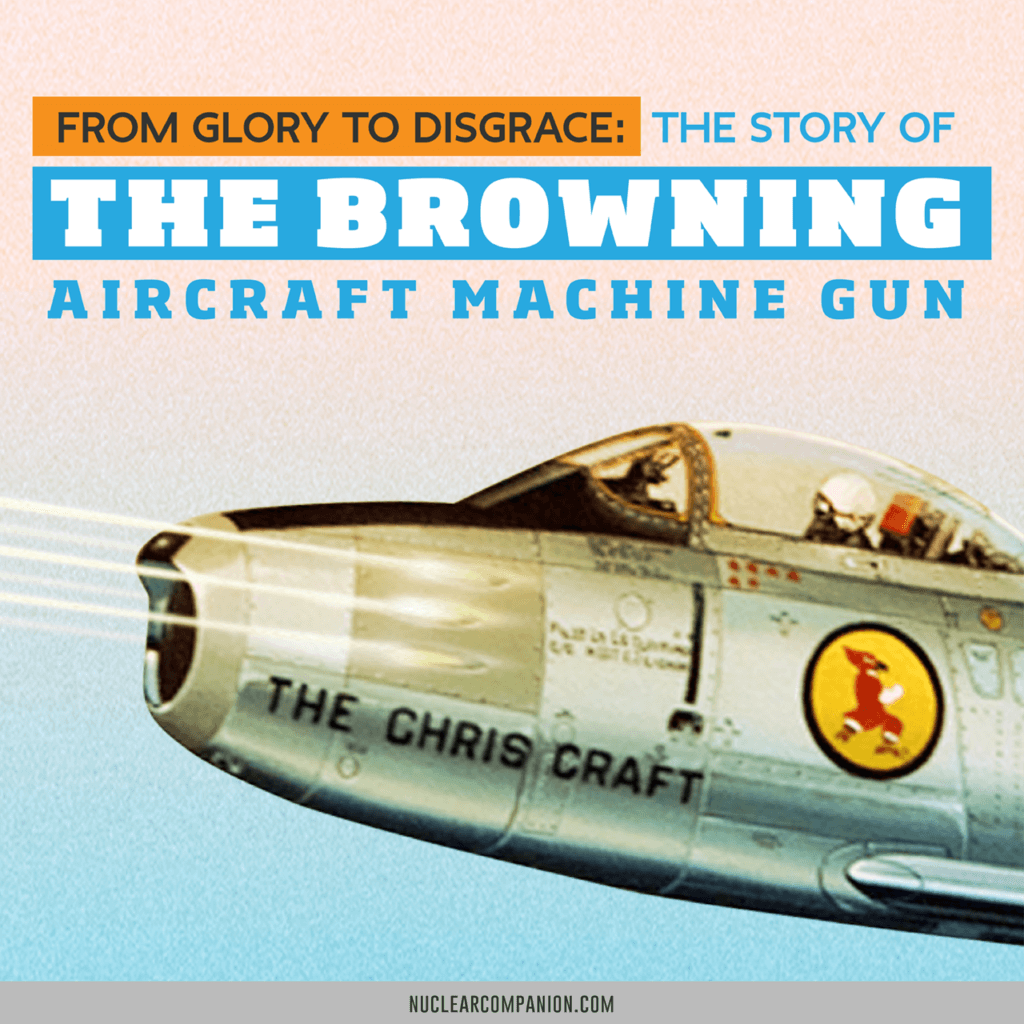
World War I
At the beginning of World War I, aircrafts had no guns. Their mission was primary reconnaissance and observation of the battlefield.
If you wanted to fire a gun you had to do it like in the following photo:
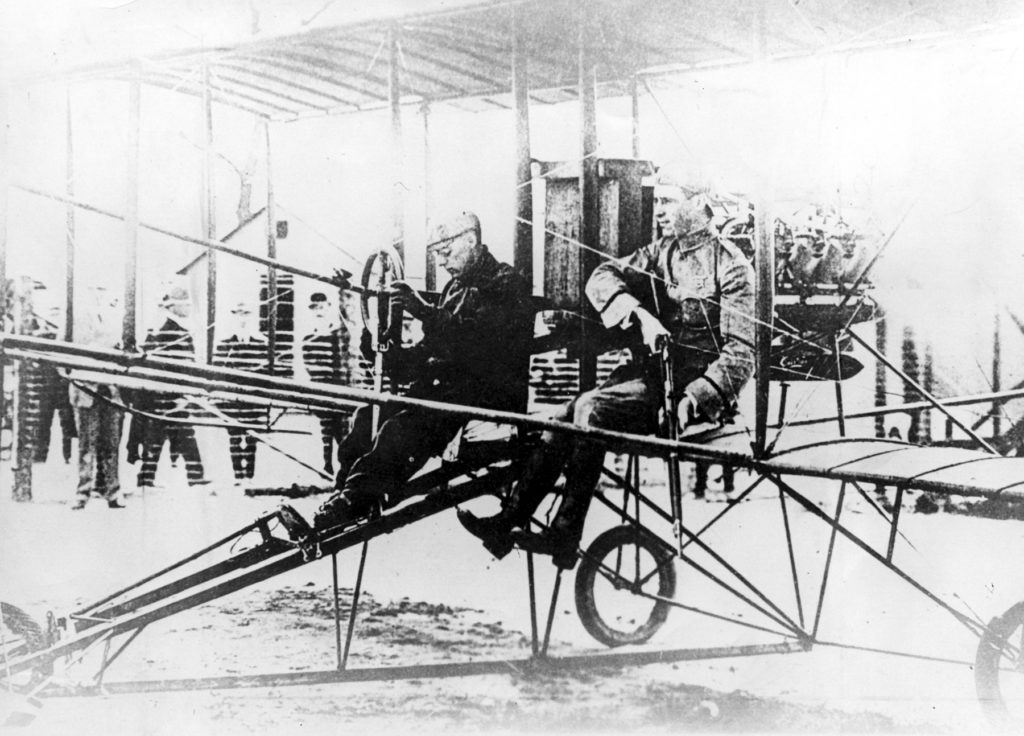
Maj. J. E. Fickle of the US Army shows how he fired a rifle from an airplane over Sheepshead Bay, New York. The pilot is Glenn H. Curtiss. (U.S. Air Force photo)
Some years later, half of the planes on the war would carry machine guns.
These guns were conversions of its ground counterparts and had the same caliber as a rifle. As aircrafts materials were wood, wire, and fabric, this was satisfactory.

In the case of the new US Army Air Service, ancestor of the US Air Force, its fleet had British and French aircraft. Almost all guns were .30 (7.62mm) caliber machine guns and a few were American-made.
But, in May 1917 the US Army adopted the “Browning Machine Gun, US Caliber .30, Model of 1917”. Destined for the ground troops, it was a great success.

This M1918 machine gun was used in the Argonne Sector and is being tested in Meuse, France, October 5, 1918. (U.S. Army photo)
The machine gun designed by John M. Browning was very reliable. And, a soldier could disassemble and reassemble it blindfolded.
The weapon’s firing rate was 500-600 shots per minute. The ammunition capacity was 250 cartridges in a box, 8 boxes to a gun.

John M. Browning (1855-1926)
Son of a Mormon pioneer, he was born in 1855 in Odgen, Utah.
Browning passed away in 1926 in Belgium.
The Air Service Officers didn’t hesitate to require something similar for their aircraft.
The .30 M2 Aircraft Machine Gun
So, Browning started working on 1918 on designing an aircraft machine gun for the US Army. But, adopting a ground weapon to aerial use was not a simple task.
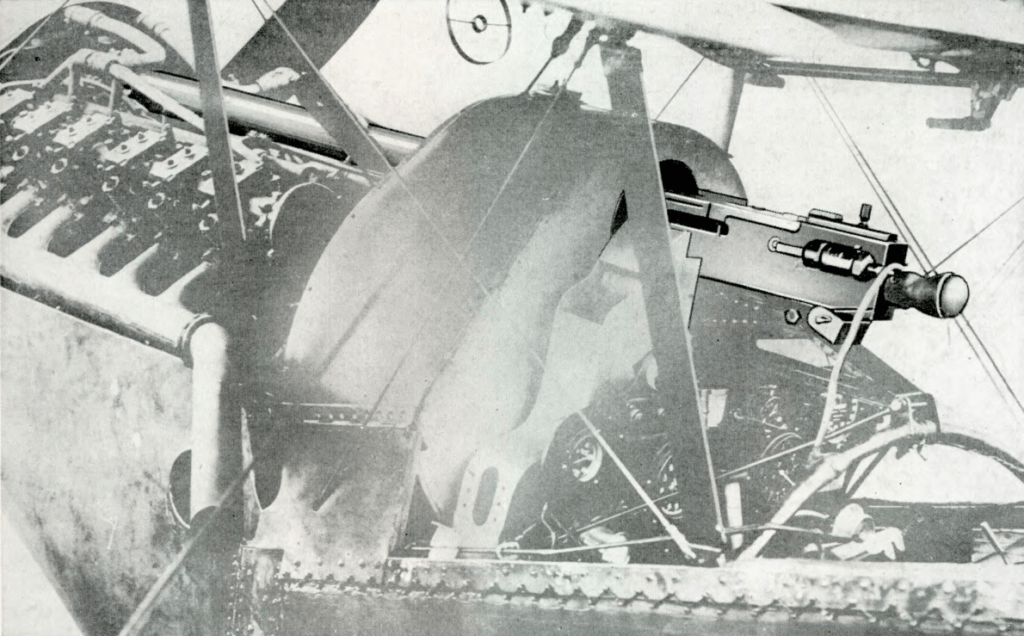
Browning’s work paid off. He designed the caliber 30 M1918 and improved M1919 machine guns.
But, few of these were produced and used in aircraft. Money was short during these years and the US Army ordered few machine guns during the 1920s.
Browning died in 1926 but the Colt Company, which owned John Browning’s patents, continued working on it.
Colt introduced the T2 aircraft gun in 1927 which had lot of improvements.
Finally, in early 1929, the US Army Air Corps added the T2 as the “Browning Machine Gun, US Caliber .30, Aircraft, M2” to its arsenal.
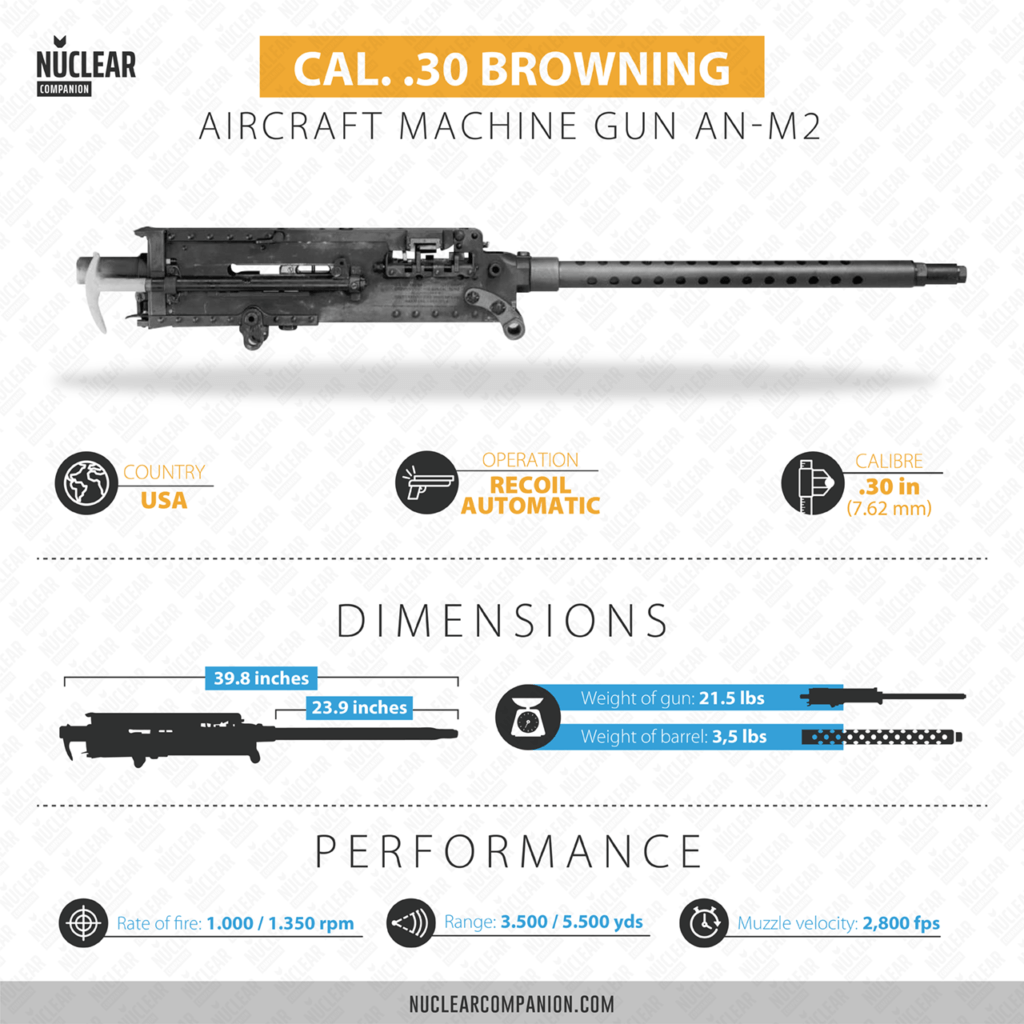
By 1938, it was still being made in very limited quantities.
Despite that, this weapon would be the standard US aircraft gun at the beginning of World War 2.
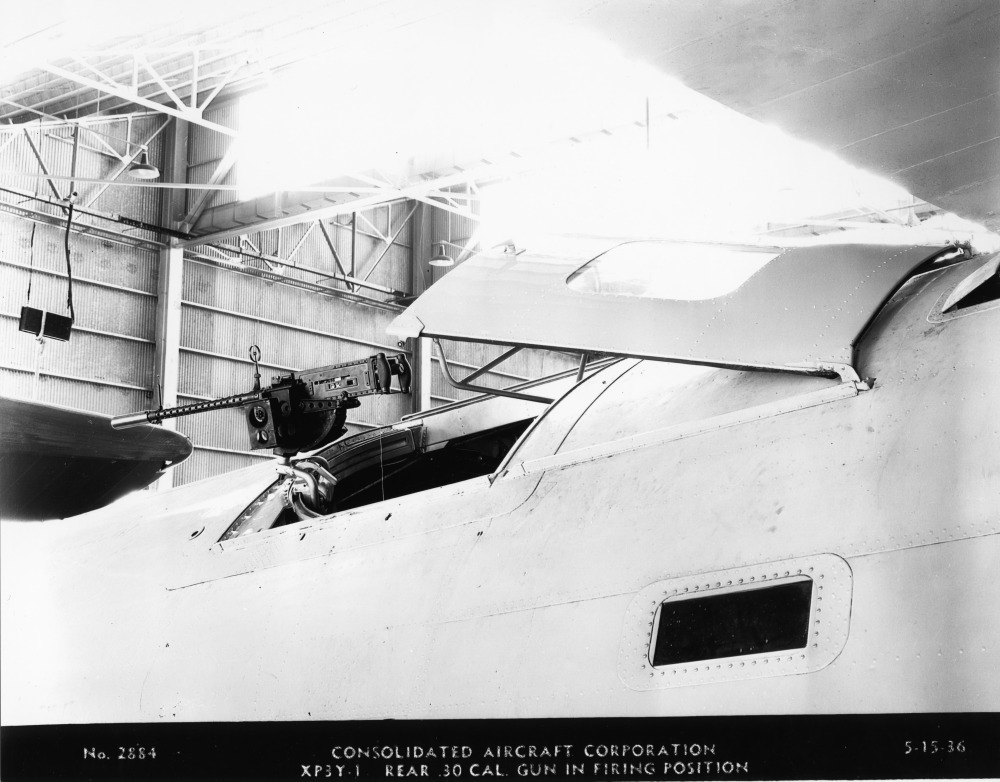
But, after 1942 it would see little use due to its limited range and impact in adversary aircraft. Heavier caliber guns reduced it to a tactical secondary role.
Indeed, the air corps needed a more powerful aircraft gun…
More power needed?
At the end of World War I, armored aircraft started to appear.
So, in 1918, John J. Pershing, Commander of the American Expeditionary Force didn’t doubt it. He requested a large-caliber machine gun for hitting all kind of targets.
Soon, John Browning started to work on it:
In 1923, the Air Service adopted the .50 (12.7mm) M1921 Aircraft machine gun.
But the service resisted it:
- First, the gun and ammo made the planes heavier in a period of time were aircraft were light machines.
- Second, 100 rounds of .50-cal ammunition occupied the room of 400 rounds of .30-cal.
- Third, they didn’t see such a caliber necessary for enemy airplanes. Perhaps for hitting something on the surfaces like vehicles or ships.
Short-sighted, right?
So, the Air Service only brought 990 .50 M1921 between 1925 and 1933.
Fortunately, the Navy got interested and continued funding on .50 machine gun.
The .50 M2 Aircraft Machine Gun
But, the 30s was a different decade.
Planes changed. They were not more light and fragile structures of wood, wire, and fabric.
In fact, at the end of the 30s, they would be all metal with powerful engines.

The “The Tin Goose” was an all-metal aircraft produced by Ford that first flew in 1929. (SDASM Archives)
Something was for sure: the .30 caliber had not enough punch.
The solution? The .50 caliber machine gun.
The Air Corps was fortunate.
Thanks to the Navy and the effort of Dr. Samuel G. Green, the .50 machine gun improved.
Green, who was chief engineer at Springfield Armory, worked toward a universal .50.
He modified the design to make a single weapon which met the requirements for all the using services.
So, in 1933 US Army Air Corps standardized the “Browning Machine Gun, US Caliber .50, Aircraft, M2”.

But, the .50 M2 had a major limitation. It had a low rate of fire.
750 to 850 rounds per minute.
As more speed of the target, more rate of fire needed for the gun to hit it.
But American aircraft compensated it by using multiple guns per aircraft.
While the US stuck to machine guns, other nations walked different paths. Germany, Japan, and the UK for example, preferred cannons.
Then, World War Two came…
The World War Two experience
The .30 M2 Machine Gun would be the standard US aircraft gun at the beginning of World War Two.
But, in 1942, the US Army Air Corps would phase it out in favor of the more potent .50 (12.7mm) caliber M2 Machine Gun.
The .50 M2, widely know as the “Fifty”, was a success.
Allmost all combat aircraft had it as armament.

Due to its caliber, it was effective against any axis aircraft. And, it was small to mount several in an aircraft together with a lot of ammo.
For example, the P-47 had 8 .50 M2 machine guns. That was a crazy rate of fire of 6000-6800 rounds per minute!
In the end, the M2 became one of the most famous guns in WWII.
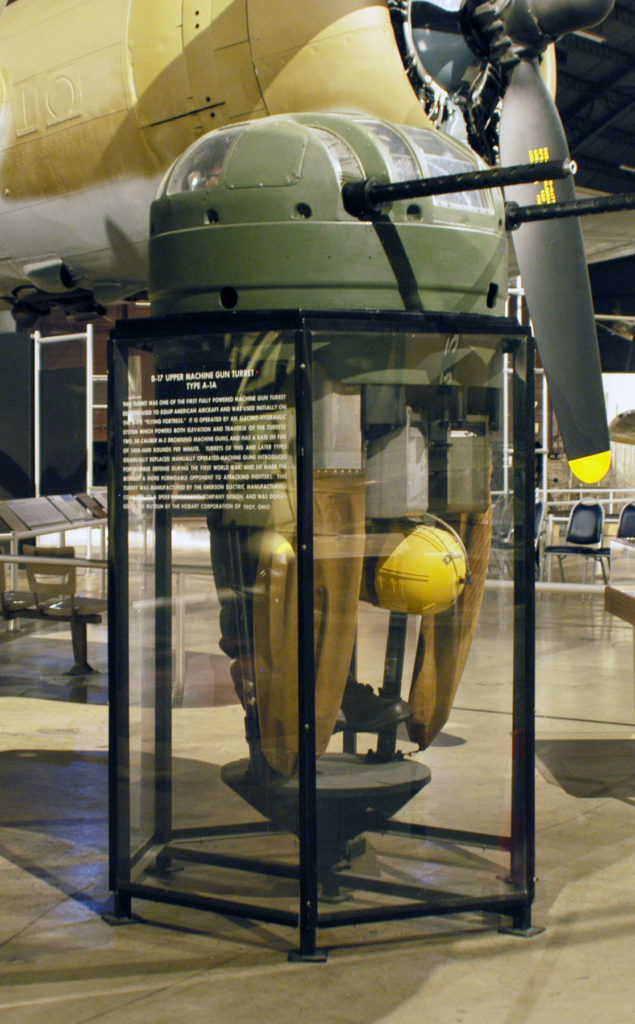
But, German experience in World War Two was different. They had to deal with all the bombers the Allies sent to them.
To be more exactly, we are talking about the armored Boeing B-17 Flying Fortress.
This is what German found:
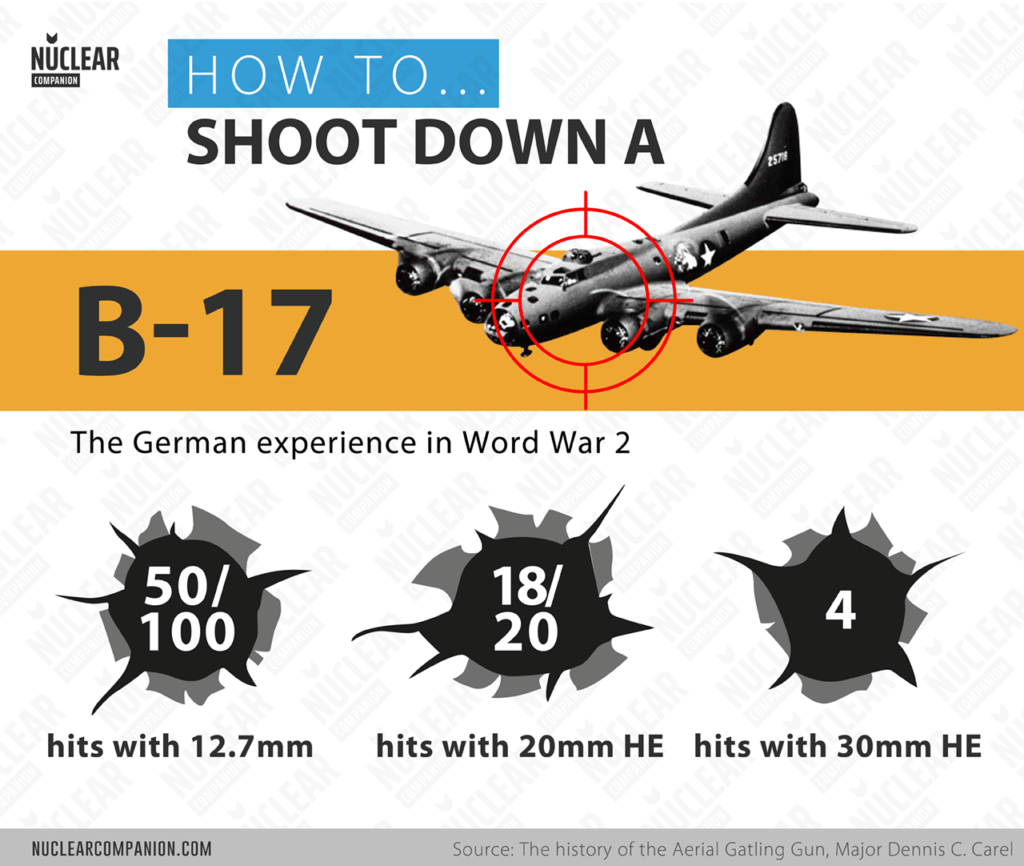
The German experience against B- 17s and B-24s was sufficient evidence that the heavy firepower of the bigger cannon was essential for a good bomber interceptor.
So, Germans went the other way around, increasing the caliber instead of the rate of fire.
At the end of World War Two, we see another leap in aircraft technology: high-performance aircraft. Or, Jets.
A new star is born (.50 AN/M3)
In the meanwhile, in 1939 the Air Corps established the requirements wanted for a new machine gun with rapid rates (1,000 rpm).
Colt’s Patent Fire Arms Company and Springfield Armory started working on this new design.
But, they failed. Their designs didn’t pass testing or didn’t get to the 1000 rpm required.
In 1942, the High Standard Company of New Haven presented a promising design. The T22 model. Yet, tests in Aberdeen proved it to be not reliable.
In 1943, the Frigidaire Division of General Motors won a contract for a new design. But, this time with no restrictions.

Frigidaire designed the T25 model. After several iterations, T25E1 to T25E3, they made it work.
The Army Corps standardized the T25E3 as the .50 M3 Browning Aircraft Machine Gun in April 1945.
In June, manufacturing of the M2 aircraft guns halted. By September, 2,400 M3 were produced. And, 3,000 before war’s end.
The M3 proved superior to the M2.
And it was an impressive achievement.

It had the same dimension and almost the same weight of the M2, but it was 50% more lethal:
Lethality = (weight of projectile x rate of fire x muzzle velocity squared)
The Jet era begins
At, the beginning of the Cold War, the .50 M3 Aircraft machine gun was the standard weapon of the U.S. Air Force
Also, we see another leap in aircraft technology: high-performance aircraft. Or, Jets.
First flown in January 1944, the Lockheed P-80 Shooting Star was the first operational U.S. jet fighter.

Which guns the P-80 used? Six AN/M3 machine guns.
The AN/M3 will be the guns for the first generation of U.S jets aircraft including:
- Lockheed P-80 Shooting Star (first operational jet fighter)
- North American F-82 Twin Mustang
- Republic F-84 Thunderjet
- McDonnell XF-85 Goblin
- North American F-86D Sabre
- Lockheed T-33 Shooting Star
- North American B-45 Tornado (first operational jet bomber)
- Martin B-57A Canberra (Tactical Bomber)
- Boeing B-52 Stratofortress

The Boing B-52 Stratofortress, the iconic bomber, also got it. It had four .50‑caliber m3 machine guns with 600 rounds in its tail turret except for the last variant.
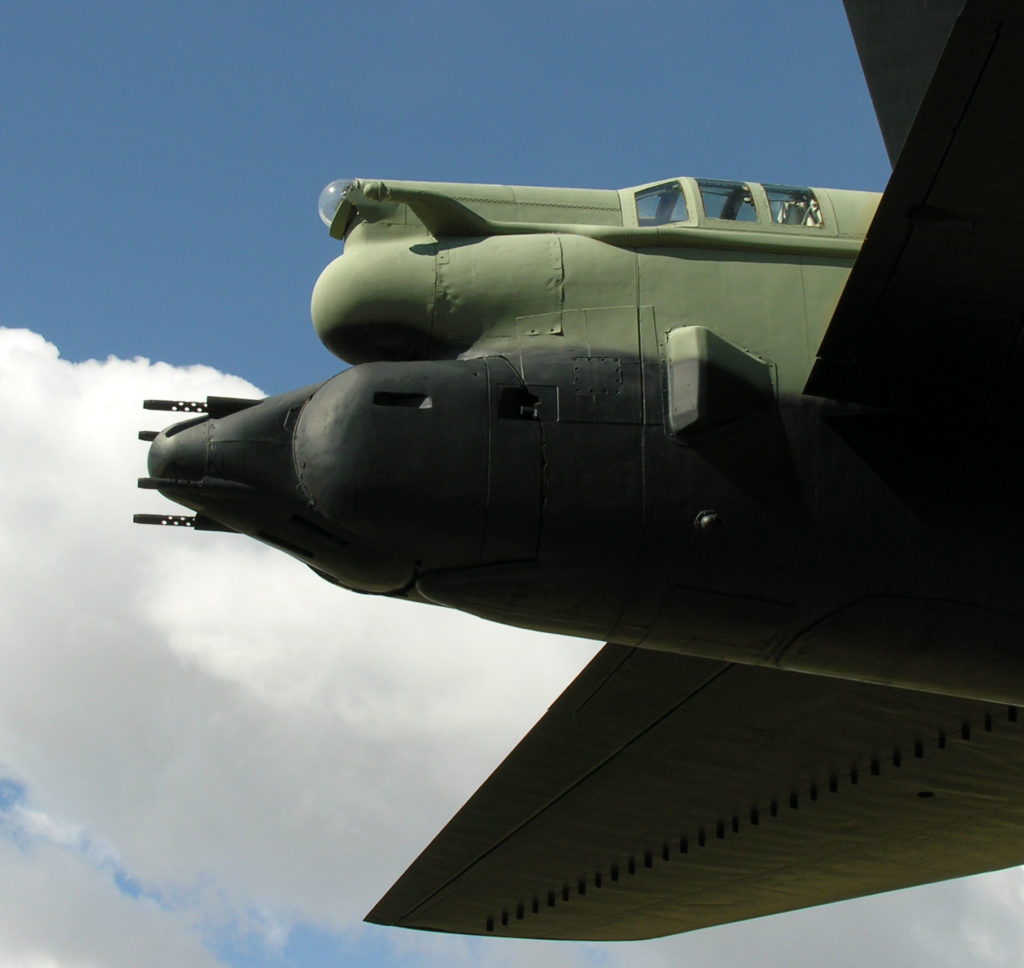
Boeing B-52D tail turret with four AN/M3 machine guns. (Photo by Greg Goebel / CC BY-SA 2.0)
Production of the AN/M3 started again during the Korean War.
A War that would puts its strength to test…
War over the Yalu
When in November of 1950 the Mig-15 started to appear over Korea, it was a turn in the Korean War.
It rendered obsolete the best bomber and fighter of the World War Two. These were the Boeing B-29 Superfortress and the North American P-51 Mustang.
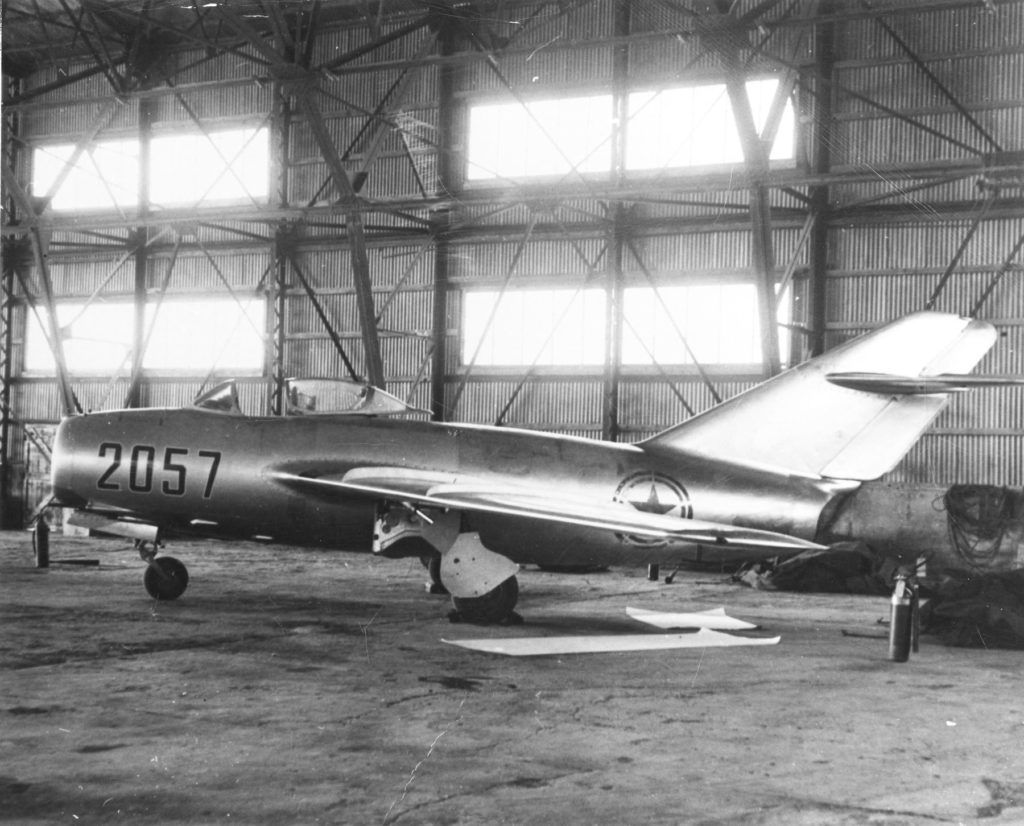
The swept-wing MiG–15 quickly proved superior to the first-generation, straight-wing jets of the U.S. Air Force (U.S. Air Force photo)
Also, The Lockheed P-80 Shooting Star, the first operational jet fighter of the USAF, was not a match for it.
To counter the Mig menace, the USAF send the 4th Fighter Wing with its best jet: the North American F-86 Sabre.
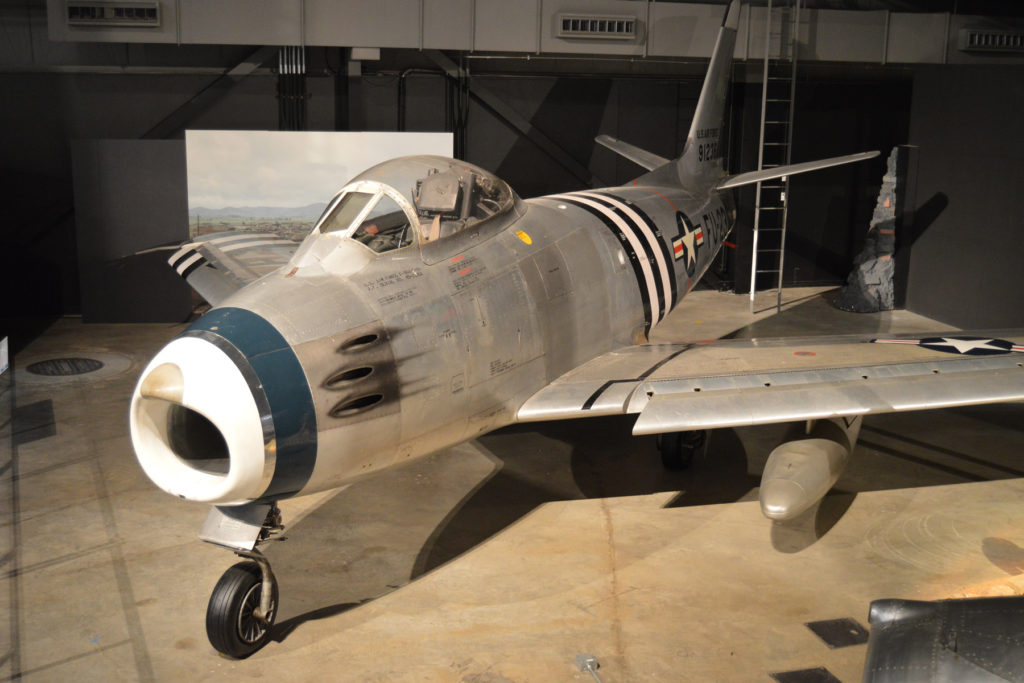
The North American F-86A Sabre was a match for the Mig-15. (U.S. Air Force photo)
So, a two-and-a-half-year contest started between the MiG-15 and F-86 over the Yalu.
Could the AN/M3 being an advantage to the North American F-86 sabre?
Boeing killer: The Mig-15
The MiG-15 was a heavily armed high altitude bomber interceptor. It was a B-29 and B-50 (an improved version of the B-29) killer.
Speed was its best defense but it had an inadequate gunsight for dogfighting.
On the other hand, it had a higher ceiling, better acceleration, better rate of climb and better turning rate than the F-86 above 30,000 feet.
The main production version and used in Korea was the Mig-15bis. It had two 23 mm NR-23 cannons and a single 37mm N-37 cannon mounted under the nose.
These are very heavy cannons. These are the stats for the N-37D:
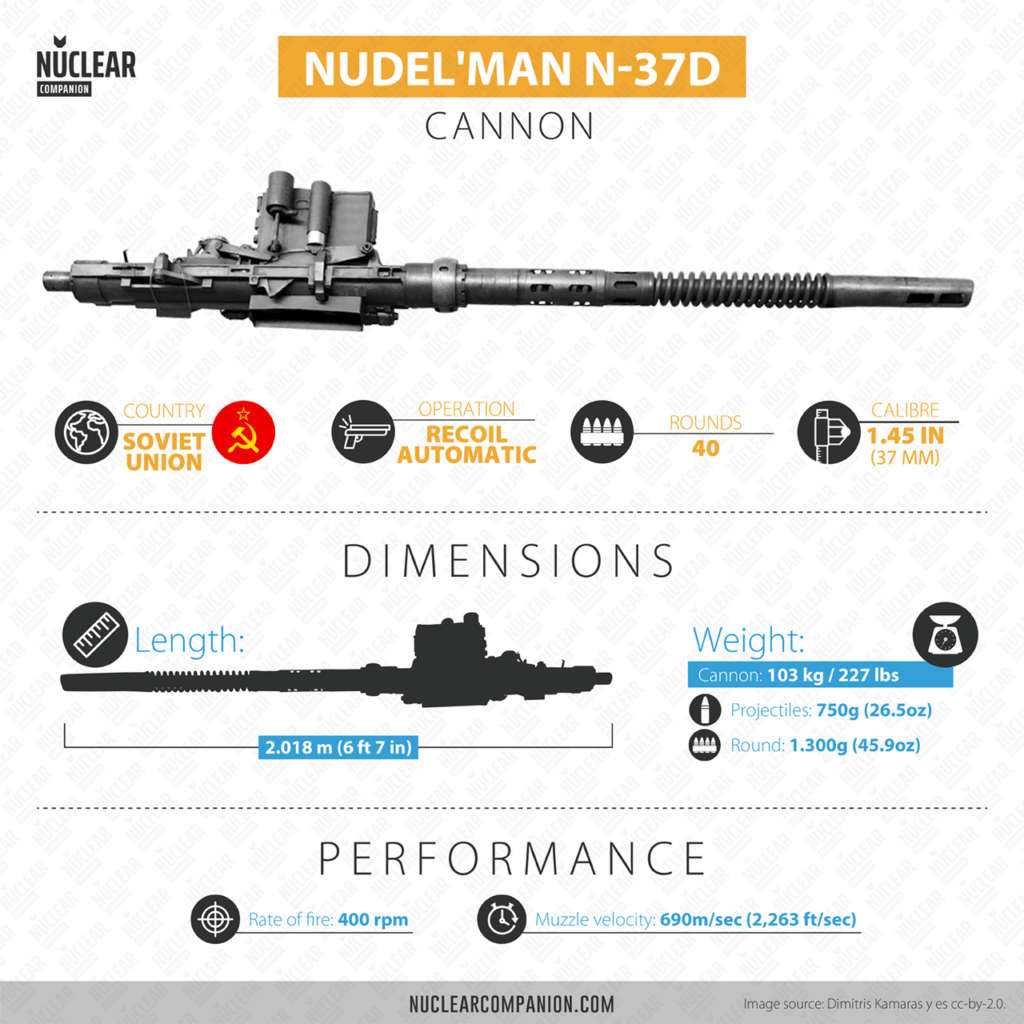
Now, let see the ones for the NR-23:
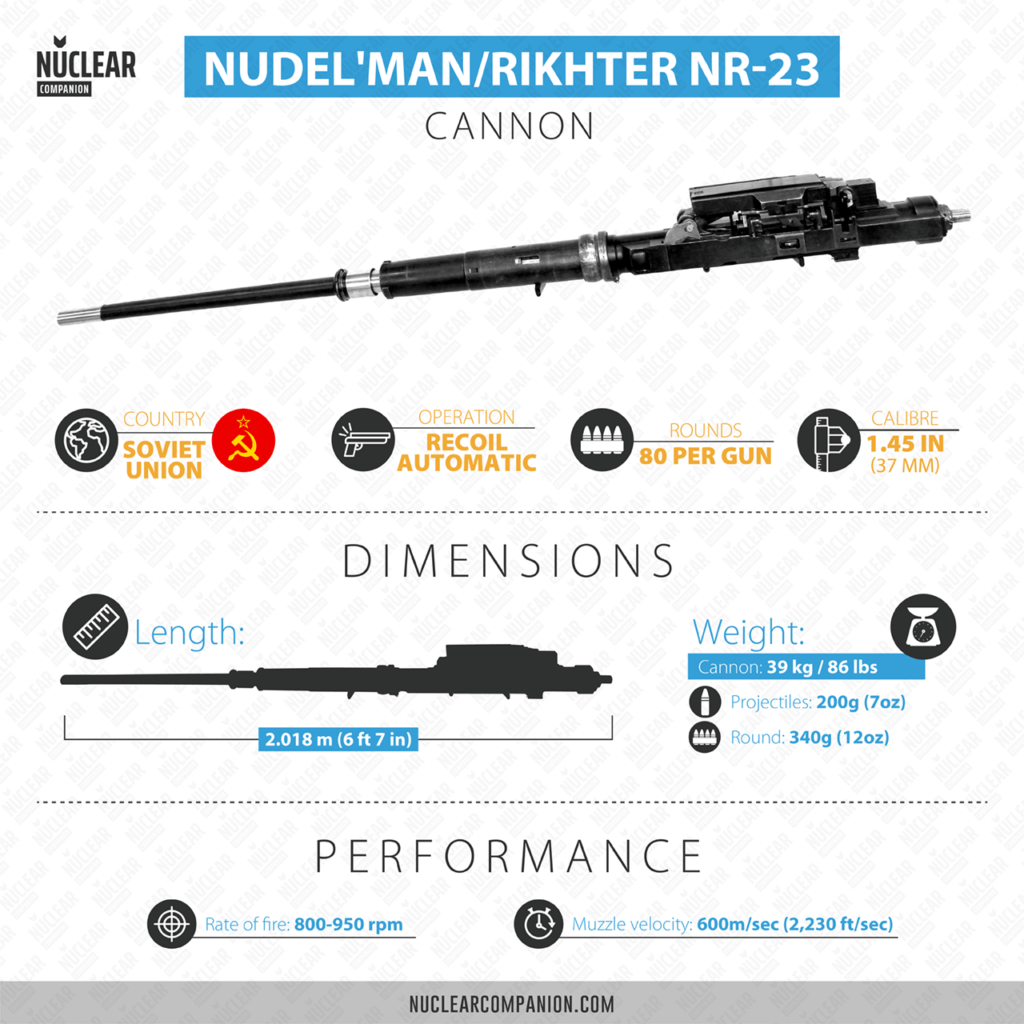
You can see them installed in a tray below the Mig nose:

Previous to the war, the Soviets had made their homework.

The tested the 37mm cannon against captured B-29s and the Tupolev Tu-4 (B-29 clone).
Only two hits of this cannon with high explosive (HE) shell could bring down these planes.
Using a 23mm NS-23 cannon (the NR-23 ancestor), eight hits was necessary for the same mission.
Against a typical American jet fighter, only two was enough.
Day Fighter: The F-86 Sabre
On the other hand, the F-86 was a heavy dogfighter.
At high altitudes, the F-86 could not outmaneuver the MIG.
But, at level altitudes, it had an even chance. In lower altitudes, the F-86 seemed to enjoy a slight advantage.

It protected its pilot with heavy armor and had more safety equipment. And it had an advanced firing system, making it a better firing platform.
Its armament was six .50 AN/M3 machine-guns which proportioned a high rate of fire. These six guns could deliver 120 bullets in a second.

A/2C David Dawson replacing the lower M3 gun of an F-86 (U.S. Air Force photo from Walk Around F-86 Sabre, Larry Davis)
F-86’s bullets converged in a buzz-saw cone of fire 1,200ft ahead of the aircraft. So, the aircraft had to close to its enemy aircraft at 850-1,200ft to hit.
Mig Alley: The Fight for Air Superiority
The Mig Alley was the most contested airspace over the Korean Peninsula.

It was located was over a chain of North Korean valleys in far northwestern Korea. Near it was the Yalu River which separates North Korea from Manchuria.
There, mostly U.S. F–86 Sabre jets tangled with Mig–15s.
In the American side, the f-86 units involved were the 4th and 51st Fighter Interceptor Groups (FIG).
Soviet Mig-15 units in the theater were the 303rd and 324th IADs (Fighter Aviation Division).
F-86 and M3 performance
As we could expect the F-86 had to get closer and score more hits to do equal damage.
But, the Mig-15 had stressed skin to withstand the rigors of high-speed flight. So, how many hits a F-86 needed to destroy a Mig-15?
On average, 1,024 rounds.
And we have to remember that a normal ammunition load was 1,602 bullets. How many seconds the six AN/M3 needed to fire 1,024 rounds?
8.5 seconds. An eternity in air combat.
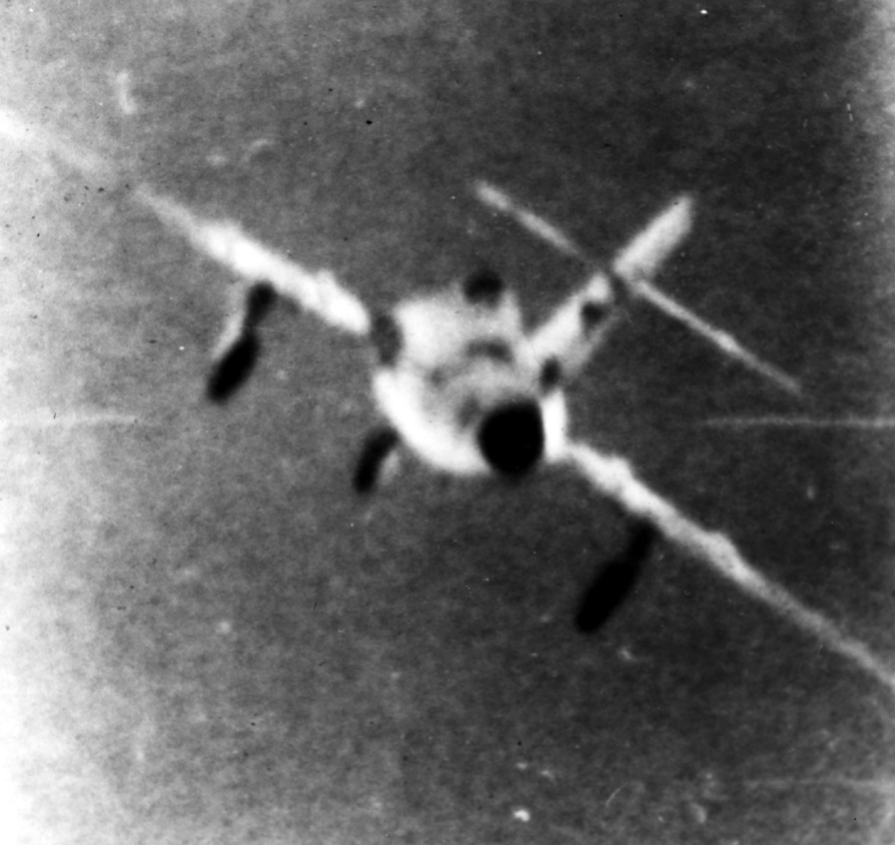
As Yevgeny Pepelyaev, top-scoring fighter pilot of the Korean War, commented:
The US Browning .50-calibre guns bounced off our aircraft like peas! It was routine for our aircraft to return home having taken forty or fifty hits.
As a result, of all MiG-15s hit by the fire, two-thirds still managed to escape. Also, in many American claims of destroyed Mig-15s, the plane got it to is home.
Many F-86 pilots were frustrated. They scored hits on a MiG only to watch it reach the Manchurian sanctuary still intact.
The AN/M3 was obsolete.
Mig-15 performance
On the other hand, the Mig-15 pilots had theirs own problems:
- Inadequate harmonization for N-37D and the NR-23 guns
- Slow firing cannons
- Vibration and instability at high speed
- Primitive gunsight
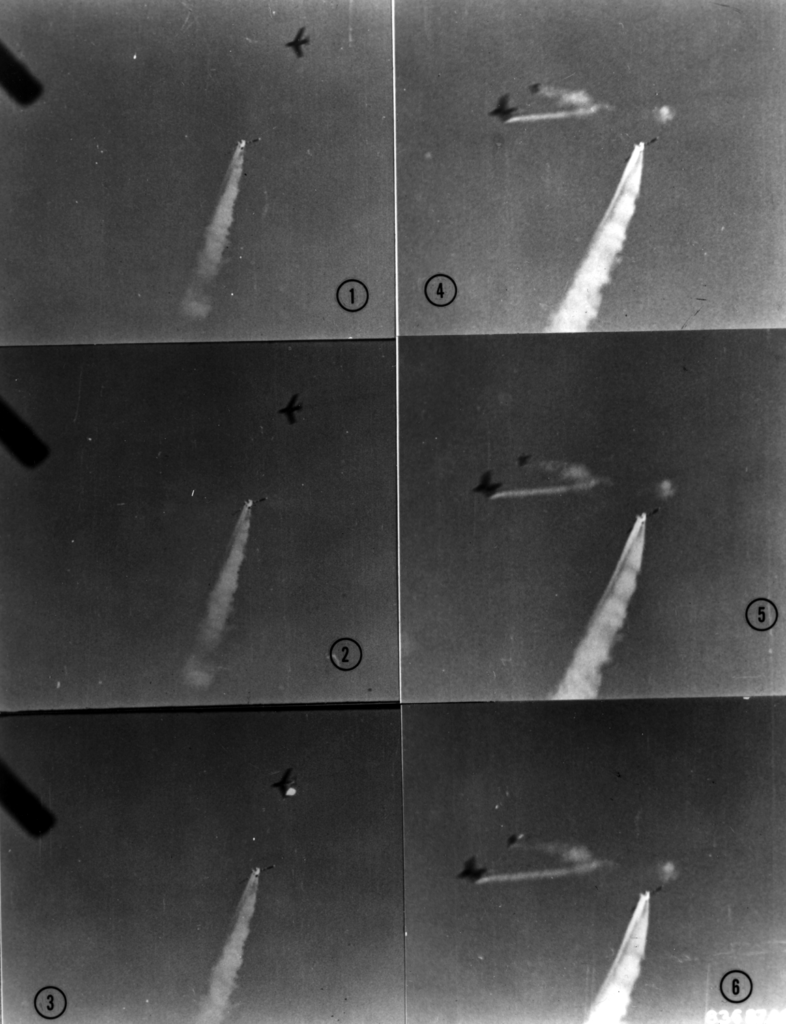
(U.S. Air Force photo from “Mig Alley. The Fight for Air Superiority”, William T. Y’Blood)
This extremely poor gunnery took its toll on the interceptor.
It was easier for the Mig-15 to take a long fix in a slow-moving B-29 bomber than in a fighter. In the first case, just one diving pass was devastating.
But, against the F-86 it had only seconds for that fix and one pass was not enough.

For example, in the spring of 1951, an RB-45C reconnaissance aircraft was attacked by four MiG- 15s. No hits were scored by the Migs while they spent all the ammunition.
So, what did the difference in Korea? Why did the USAF succeed?
It was not Firepower as we have already seen.
But, superior aircrew training, experience, and morale. Also an excellent fire control system on the F-86.
Project Gun Val and the Demise of the AN/M3
On 3 April 1951 the Air Materiel Command initiated Project Gun Val. Its heading was “Evaluation of Aircraft Armament”.
Its objective was simple:
Which was the most desirable armament for various types of fighter mission?
For that purpose, a variety of foreign and domestic guns were installed in USAF aircraft.
Four F-86E-10 and six F-86F-1s replaced their guns as part of this project. New four T-160 20mm cannons were in place of the standard six 0.50 AN/M3.
Eight of these aircraft would fly “Gun Val” missions in Korea.
In the end, the T-160 proved successful and a quantum leap in killing power.
The Gun Val project proved that a large caliber and a high rate of fire was necesary for a dogfighter.

Conclusion
The Browning Aircraft Machine Gun era lasted 30 years. It was a ground machine gun converted to aerial combat that stood out during WW2. But it was the Korean War which signaled the end of it.
After the WW2, US experts recognized the need for a high rate of fire but failed to see that the M3 was obsolete. Its high rate could not compensate for its small caliber size. An aerial gun with a large caliber and high rate of fire was needed.
For no surprise, in 1954, when the first F-100 Super Sabre came off the assembly line, it didn’t have six M3 machine guns. It got four M-39s cannons.
And shortly after, the M61 Vulcan replaced M-39. It was the Vulcan which became the most widely used free world fighter aircraft gun in history.
Now it is your turn
What do you think of Browning Aicraft Machine Gun and its service record?
Or maybe you have a question.
Let me know by leaving a quick comment below right now.
Great article!
The 20mm Hispano-Suiza cannon M1, M2, M3 and M24 as well as the Colt Mk 12 were not as reliable as the RAF versions mostly due to the chamber gap. What if the Brass had simply copied or acquired the RAF Mk V for the F-86? It was be lighter than the T-160/M39, fast enough, more reliable, and around since 1944.
2 were lighter than 1 T-160 and could together, match it’s rate of fire. Reliability wasn’t perfect, but 1500 rounds fired per stoppage beats a jam every 284 rounds fired! Imagine if the F-86 had HS Mk V cannons from the A model! To the relief of MiG-15 pilots, the only fighters with this reliable cannon was the RAF. The US Navy had mostly cannon armed jets, but they could not match the F-86 or the Mk V cannon.
Only the F-86 had the swept wings to match the performance of the MiG-15, but lacked the cannon power of the RAF. The 8 jet Gun Val unit was the exception.
Gunner aboard the B-45 Tornado and B-66 Destroyer, 85 th. Bomb Squadron, 47th Bomber Wing.
Years:
1957 – 1958
Twin .50 Calibers in B-45 Turret.
Twin .20 Millimeters in B-66 Turret.
Trained at Lowery AFB Denver, Colorado.
My experience with both weapons was satisfactory.
From antiquated Gun sites and turret system in B-45 , seated in rear turret cockpit,
To seated in ejection seat behind Aircraft Commander (pilot) in B-66 was tremendous change for gunner.
B-66 Radar screen, 0-24k yards , turret search mode handle, and firing button was the new era in aerial Combat for bomber crews. No defensive misses aboard the B-66 during this era.
As to the fire power and malfunction free firing accuracy and dependability, we had relatively few jams or firing malfunctions. The .50 Caliber and the .20 Millimeter were the best available weapons of that era.
I Was happy to be serving my Country and felt we were strong and adequately prepared to get our assigned duty completed each time we were sent out on mission.
,
Minor comments on a list in the article…
“The AN/M3 will be the guns for the first generation of U.S jets aircraft including:”
North American F-82 Twin Mustang [not a jet, a twin-fuselage propeller-driven fighter]
North American F-86D Sabre. [The F-86D (and G) were armed only with rockets, no guns.]
Lockheed T-33 Shooting Star [Unarmed trainer developed from the F-80]
Like I said, minor nits.
Good article. The T-33 did carry two .50 caliber M3 guns when needed. The F-84G model carried six M3 guns with four in the nose and two in the wing root area accessible via the open landing gear bay. The Mig like any jet being pelted by projectiles has as it’s greatest risk of rounds going into the tailpipe and destroying the hot section of the engine turbine blades and that is fatal for it. Sure rounds can and did bounce off a slanted angle of hit but if that made the Russian feel better saying that well good for him. It became apparent from our Air Forces success in the air over North Korea that training and flexibility of air crews thought processes were the deciding factor and if the majority of aircraft fielded in Vietnam had guns on their aircraft and not just missiles we would had a much higher kill ratio.
Nice history on the Browning machine gun. I understand that the firepower of fighters turned to air to air missiles; like the early Sidewinder that had some success against the Mig 15. The offencive firepower in today’s fighters have an array of missles as well as machine guns. It was clear that machine guns were still needed in dog fights as the Phantom jet had limited success against the Mig 21 with only missles in Vietnam.
“….Short-sighted, right?…” Not really. The US fliers already had combat experience with a large-caliber machinegun, the Colt-Vickers firing 11mm Gras incendiary ammunition, from WW1. The Gras 11mm had been chosen because it was about the same length as an ordinary rifle cartridge, making for a quick conversion, but the larger caliber allowed a bigger incendiary load to be carried for balloon-busting. These were fitted to SPADs in France. The SPADs could have carried two 11mm guns, but the pilots preferred a mix of one 11mm with one rifle-caliber Vickers because the rifle-caliber rounds were lighter and more ammo could be carried, and the Gras really didn’t offer much advantage against aircraft of the day, In the Twenties, the majority of the aircraft were still lightly built and without armor, so the excellent .30 Browning M2 was a good choice.
Later, when the US got involved in the air-fighting over Europe and the Pacific, the majority of targets were either very lightly built and unarmored (Japanese) or small fighters (Germans). The .50 did not have a high-explosive round, but could chop down the enemy through accumulated damage, or by piercing and igniting fuel tanks. If the Germans had produced an equivalent to the B-17 in numbers, the weakness of the .50 might have been realized sooner. But, for the type of aircraft the Allies were fighting in 1943-45, the .50 M2 was probably the best compromise, and the M3 an excellent choice.